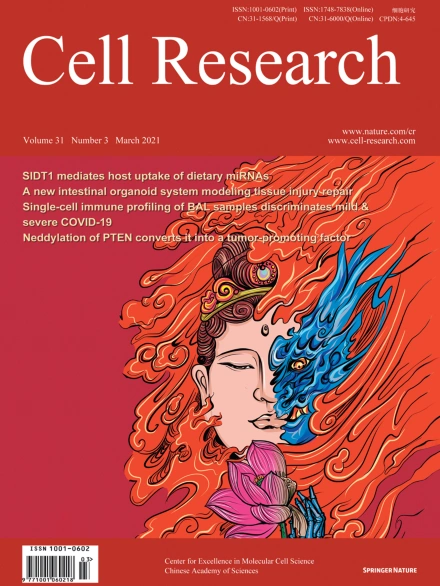
Advanced Search
Submit Manuscript
Advanced Search
Submit Manuscript
Volume 31, No 3, Mar 2021
ISSN: 1001-0602
EISSN: 1748-7838 2018
impact factor 17.848*
(Clarivate Analytics, 2019)
Volume 31 Issue 3, March 2021: 369-372 |
Cryo-EM structure of the human mitochondrial translocase TIM22 complex
Liangbo Qi1 , Qiang Wang1 , Zeyuan Guan1 , Yan Wu1 , Cuicui Shen1 , Sixing Hong1 , Jianbo Cao2 , Xing Zhang3 , Chuangye Yan4,* , Ping Yin1
1National Key Laboratory of Crop Genetic Improvement and National Centre of Plant Gene Research, Huazhong Agricultural University, Wuhan, Hubei 430070, ChinaDear Editor,
Mitochondria are essential organelles in cellular metabolism, homeostasis, and apoptosis.1,2 Most mitochondrial proteins are synthesized as precursors in the cytosol and then imported into mitochondria by specific protein translocase complexes, including the translocase of the outer membrane complex (TOM complex), the carrier translocase of the inner membrane complex (TIM22 complex), the presequence translocase of the inner membrane complex (TIM23 complex), the sorting and assembly machinery (SAM complex), and the mitochondrial import complex (MIM complex).3 The TIM22 complex is responsible for the translocation and insertion of hydrophobic membrane proteins, including mitochondrial carrier proteins and translocase subunits (Tim17, Tim22 and Tim23).3 In humans, TIM22 is a 440-kDa complex comprising at least six components: the hypothetical channel-forming protein Tim22, three small Tim proteins (Tim9, Tim10a and Tim10b), Tim29 and acylglycerol kinase (AGK).1 Considering the functional importance of mitochondrial protein import, the TIM22 complex has been linked to many diseases. For example, mutations in the TIM22 gene have been reported to cause early-onset mitochondrial myopathy.4 AGK participates in lipid biosynthesis, and mutations in the AGK gene lead to Sengers syndrome.2 Mutations in the TIMM8A gene (also called DDP1) cause deafness dystonia syndrome.2
https://doi.org/10.1038/s41422-020-00400-w